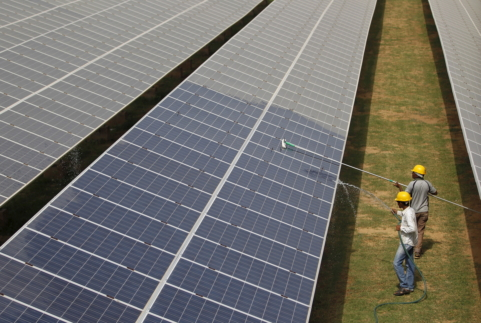
India is the third largest importer of oil and the fourth largest importer of petroleum products and liquefied natural gas (LNG), according to official figures. The Ministry of New and Renewable Energy (MNRE) targets boosting clean-energy capacity to 175 gigawatts by the year 2022. An increased use of indigenous renewable resources could reduce its dependence on expensive imported fossil fuels.
“We are implementing schemes and working vigorously to reach the goal,” says Dr Gaddipatti Prasad, Scientist and Director, MNRE.
In statistics provided by the Make In India website, India has the fifth largest power generation portfolio in the world, the fourth largest installed capacity of wind power and the third largest installed capacity of solar power. To promote clean energy and energy security, about 8 per cent of total generation of electricity, excluding hydropower, is expected to come from solar energy by 2022.
One hurdle holding back solar energy generation from taking off in India has been the costs associated with solar photovoltaics. The government plans to allocate $3.1 billion (Dh11.3 billion) in state funding to support the country’s solar panel manufacturing industry.
Land acquisition is another concern, considering 1MW of solar power generation requires around five acres of land. The government is trying to overcome this issue by earmarking dedicated solar parks across the country.
“About 34 solar parks with a capacity of 20,000MW across 21 states have been sanctioned, which are under various stages of execution,” says the MNRE’s 2016 Renewable Energy Report. “About 1.1 million households currently use solar energy to meet their lighting needs. Solar photovoltaic power systems are used for a variety of applications such as rural electrification and the provision of power to border outposts.” More than 10,000 remote villages have been provided with electricity services through renewable power systems.
India is home to the world’s largest single-location solar power plant, set up by the Adani Group at Kamuthi in Tamil Nadu.
“No country in the world has accelerated their solar programmes at the pace this government has,” says Gautam Adani, Chairman of Adani Group. India will also invest $1.8 billion in power lines to transmit power from solar parks to enable Modi’s goal of boosting clean-energy capacity to 175GW, Bloomberg reported in December.
The dedicated transmission lines, part of the green corridor project, will transmit 20 gigawatts of power from solar parks. The green-energy corridor will enable a seamless flow of electricity from clean electricity producing states in India to those states that face power shortages.
Bloomberg







